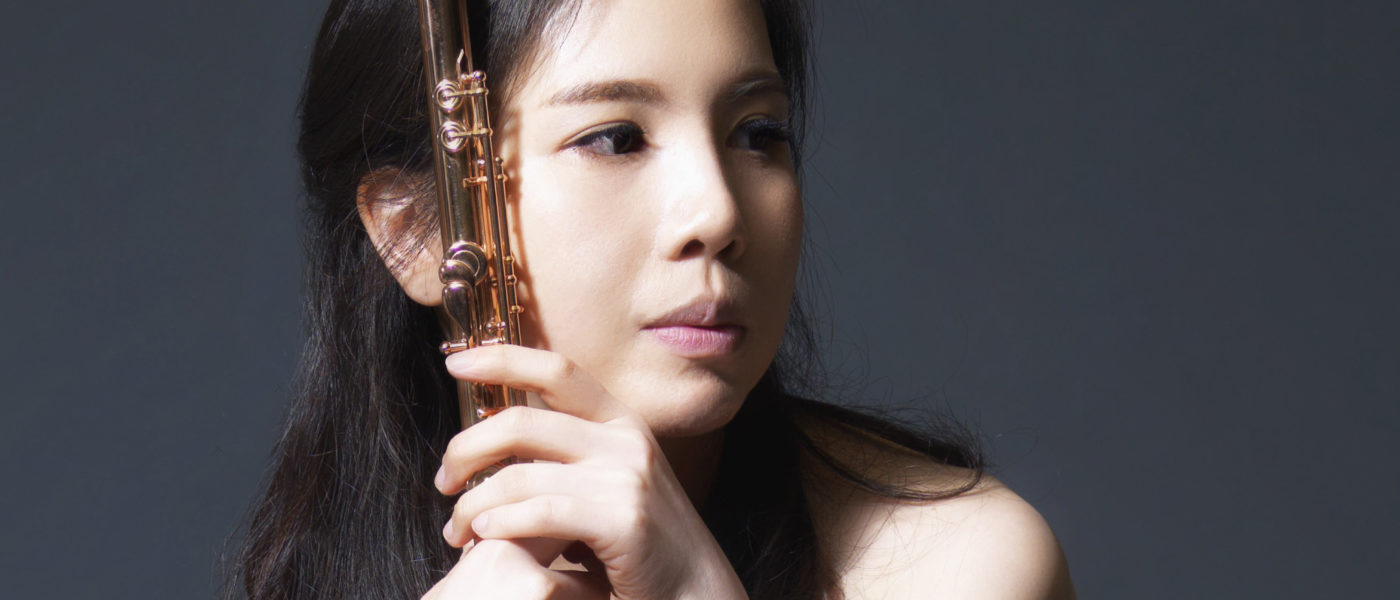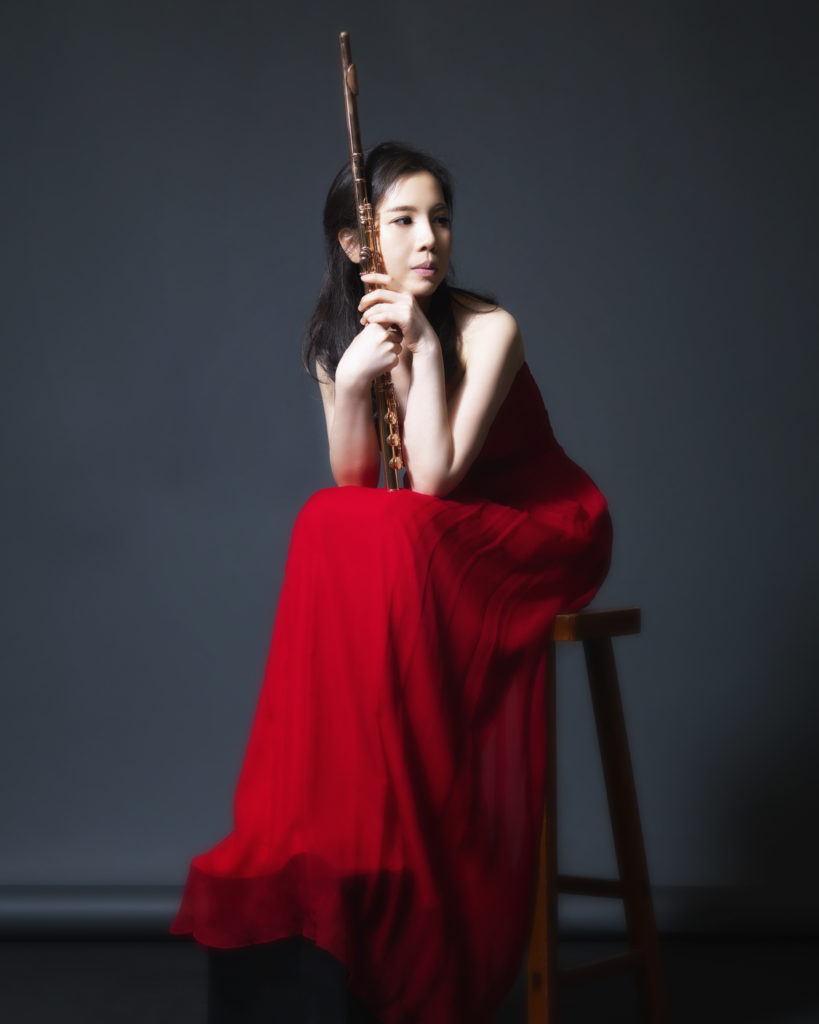SKP Management Presents Sang Ae Kim in Review
SKP Management Presents Sang Ae Kim
Sang Ae Kim, flute; Jaeyoun Yoo, piano; Jaehyeon Ha, cello
Weill Hall at Carnegie Hall, New York, NY
September 15, 2016
An extremely impressive recital took place this week, that of flutist Sang Ae Kim, already solidly established in teaching and orchestral positions in South Korea, but appearing this week in her New York debut at Weill Hall primarily as soloist. In works of Vinci, Beaser, Holliger, Gaubert, and Martin, she was unfailingly polished and assured in some tremendously difficult repertoire. In some of the more recently composed, adventurous repertoire, this listener was reminded of hearing the flutist Marina Piccinini decades ago and being left with the impression that there must be nothing beyond such a player’s grasp; interestingly (perhaps not coincidentally) Ms. Kim has studied with Ms. Piccinini at the Peabody Conservatory of Music, where she received her Master of Music degree and Graduate Performance Diploma. She has also studied at the Korea National University of Arts under Zvelev Valentin, privately with Hye Kyung Lee, Soo-Kyung Park, and Keith Underwood, and as a DMA candidate at Boston University in the studio of Elizabeth Ostling.
Starting off the program was the Flute Sonata in D Major by Leonardo Vinci (1690-1730) – not to be confused with the Renaissance artist Leonardo Da Vinci, born over two-hundred years earlier (1452-1519)! This eighteenth-century Vinci, well-known for his operas, wrote some delightful instrumental works as well, of which perhaps the most famous is this one. It made for a gracious opening, with the basso continuo accompaniment tastefully realized by pianist JaeYoun Yoo, superb collaborator for the evening. A pristine Adagio opened and a buoyant Allegro followed, bubbling with clear and precise flute arpeggios. The central Largo movement was appropriately meditative, and the closing Pastorella and Presto were scintillating with delicate and varied articulations. Throughout the concert Ms. Kim played with a focused and beautiful tone, but here it was slightly mellower than the subsequent pieces – perhaps due to what appeared to be a change of the flute’s head joint, something one sees increasingly in earlier repertoire.
Fast-forwarding to some high-powered twentieth-century virtuosity, the program continued with the Variations for Flute and Piano (1982) by Robert Beaser (b.1954), noted American composer and Chairman of the Composition Department at Juilliard for over twenty years. The Variations are, as the program notes describe (quoting noted flutist and piccoloist Walfrid Kujala), “the flutist’s Mount Everest.” Starting off in folk like simplicity, and progressing through quasi-impressionistic and rhapsodic elaborations, it is a captivating work that tests the limits of flute-playing, but always with a sense of musical integrity. Ingeniously arranged as three movements, but each containing variations on the first movement’s theme, it has a feeling of inevitability and unity throughout. The atmospheric second movement, entitled Nocturne contains a cadenza that “pulls out all the stops” technically and dramatically. Ms. Kim was in top form here, approximating a musical dialogue with herself from register to register, retaining continuity all the while. It was stunning. The last movement (Variations 11-15, the last a coda) consummated the work with brilliance, flawless and unflagging. If Ms. Kim hadn’t taken the tiniest visible breath following the last note, one might never have suspected that she had climbed a musical mountain. Special kudos go as well to the pianist Ms. Yoo, who had to be master of her own challenging part as well as sensitive support to Ms. Kim at every step of the climb.
After intermission we heard Ms. Kim unaccompanied in a work entitled (é)cri(t) for Solo Flute (2006) by Heinz Holliger (b. 1939). Mr. Holliger has been renowned for decades as an oboist, but is also quite active as a composer. His piece (é)cri(t) is a play on the French word for “cry” (cri), embedded in the word “ecrit” (“written”). As the excellent program notes by Elizabeth Stern state, “Holliger explores the transformation of primordial sound into music.” With the multiphonics, harmonics, and whistle tones that range from a scream and wail down to a whisper, it was clear again that nothing was beyond Ms. Kim’s range.
On a somewhat lighter note the program progressed with a lush set of pieces by Philippe Gaubert (1897-1941) entitled Trois Aquarelles (Three Watercolors) for Flute, Cello and Piano (1915) with the ensemble of Ms. Kim and Ms. Yoo augmented by the talents of cellist Jaehyeon Ha. Ms. Ha’s cello lines intertwined with the flute’s in lovely balance. The Aquarelles are a fragrantly French set, not far from the styles of Fauré or Roussel, and the trio brought out some beautiful musical colors while blending with good balance. Par un clair matin (On a Clear Morning) took the listener to such a dreamy tonal world that one asked how it could have been composed in the midst of World War I – but the second piece, Soir d’Automne (Autumn Evening) answered with bittersweet nostalgia. The third piece, Sérénade, returned the listener from dreams back to the external world in dancelike rhythms.
To close the program Ms. Kim and Ms Yoo played the Ballade for Flute and Piano by Frank Martin (1890-1974). Composed in 1939, the work is rather brooding and intense at the start but growing in energy to a fiery, brilliant close. The duo played it with burning commitment and received several curtain calls in hearty approval, eliciting an unannounced gently lyrical encore.
To say that Ms. Kim performs with a focused demeanor would be an understatement. She is so single-minded in her mission that she seems psychically cordoned off from her audience. In fact, the first three rows of the audience were cordoned off with tape, perhaps a good idea in these days of rude distractions, but an infrequent occurrence. At any rate, the resulting air of solemnity – along with justifiable expectations of great playing – seemed to inspire unusually attentive listening, and the audience was impressively silent through even the quietest of tones (excluding one intrusive marimba ringtone).
Bursts of cheering were heard at the evening’s conclusion, and it was gratifying to see the faint flicker of a smile cross Ms. Kim’s face.


